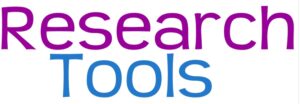Download our free toolbar with more than 100+ Boolean Searches HERE
Information Gathering is a vital line to success as a sourcer. Undertanding why you are searching what you are searching can prove  to be the difference between success and failure. having a large tool box is great if you want to be the cool kid on the block, but around here I like to knwo that I am spending my time as efficeitnyl as I can. Billing lcients fro hours wasted is not a typical line item they like to see.
to be the difference between success and failure. having a large tool box is great if you want to be the cool kid on the block, but around here I like to knwo that I am spending my time as efficeitnyl as I can. Billing lcients fro hours wasted is not a typical line item they like to see.
Below is a list of 11 strong data and statistical tools we use to create market and talent maps:
World Wide:
World Bank– The world bank is a great resource for learning, tracking and gathering data. This is a great resource for tracking economic and employment trends.
Best used for:
- Data: for international and national statistics
- Research: for cross sector reporting on human development and statistical economic information
- Prospects: Information, analysis and advice on global trends
IMF – The IMF monitors the world’s economies, lends to members in economic difficulty, and provides technical assistance.
Best used for:
- Economic Outlooks
- Global and regional financial statistics
- U.S Labour and economic forecasting
UN– The United Nations can be used for more than just a reference point you hear about on the news.
Best used for:
- National Statistical systems
- Global research for economic standards
- Market research and Trade statistics
CIA World Factbook – provides information on the history, people, government, economy, geography, communications, transportation, military, and transnational issues for 267 world entities.
Best used for:
- To study global intelligence
- Country comparisons
- Country profiles
- Military and people studies
Google labs – Public data – The Google Public Data Explorer makes large datasets easy to explore, visualize and communicate. As the charts and maps animate over time, the changes in the world become easier to understand.
Best used for:
- Population studies including job sector reporting
- Unemployment by geo-location
- Public data on human capital studies
OECD– OECD brings together the governments of countries committed to democracy and the market economy from around the world.
Best used for:
- Statistics comparison for almost any topic
UNESCO– Global and internationally comparable statistics on education, science, culture and communication.
Best used for:
- Surveys and studies
- World and regional statistics
- Science and Technology statistics an surveys
US:
U.S. Bureau of Labor Statistics – The Bureau of Labor Statistics of the U.S. Department of Labor is the principal Federal agency responsible for measuring labor market activity, working conditions, and price changes in the economy. Its mission is to collect, analyze, and disseminate essential economic information to support public and private decision-making.
Best used for:
- US Labor studies
- Workplace studies
- Unemployment rates, stats and charts
Census Bureau – To provide the best mix of timeliness, relevancy, quality, and cost for the data we collect and services we provide
Best used for:
- Population & Housing Census – every 10 years
- Economic Census – every 5 years
- Census of Governments – every 5 years
- American Community Survey – annually
- Our many surveys — both Demographic & Economic
- Economic Indicators – each indicator is released on a specific schedule, see the Economic Indicator Calendar
LatAm & Caribean
CEPAL – CEPALSTAT is the gateway to all the statistical information of Latin America and the Caribbean countries collected, systematized and published by ECLAC.
Best used for:
- Studies on economic conditions
- Science and technology
- Employment and unemployment market and trends
Europe:
Eurostat – European statistical information
Best used for:
- Statistical information surrounding European countries
- Employment Trends and outlooks
By Noel Cocca
CEO/Founder RecruitingDaily and avid skier, coach and avid father of two trying to keep up with my altruistic wife. Producing at the sweet spot talent acquisition to create great content for the living breathing human beings in recruiting and hiring. I try to ease the biggest to smallest problems from start-ups to enterprise. Founder of RecruitingDaily and our merry band of rabble-rousers.
Recruit Smarter
Weekly news and industry insights delivered straight to your inbox.





